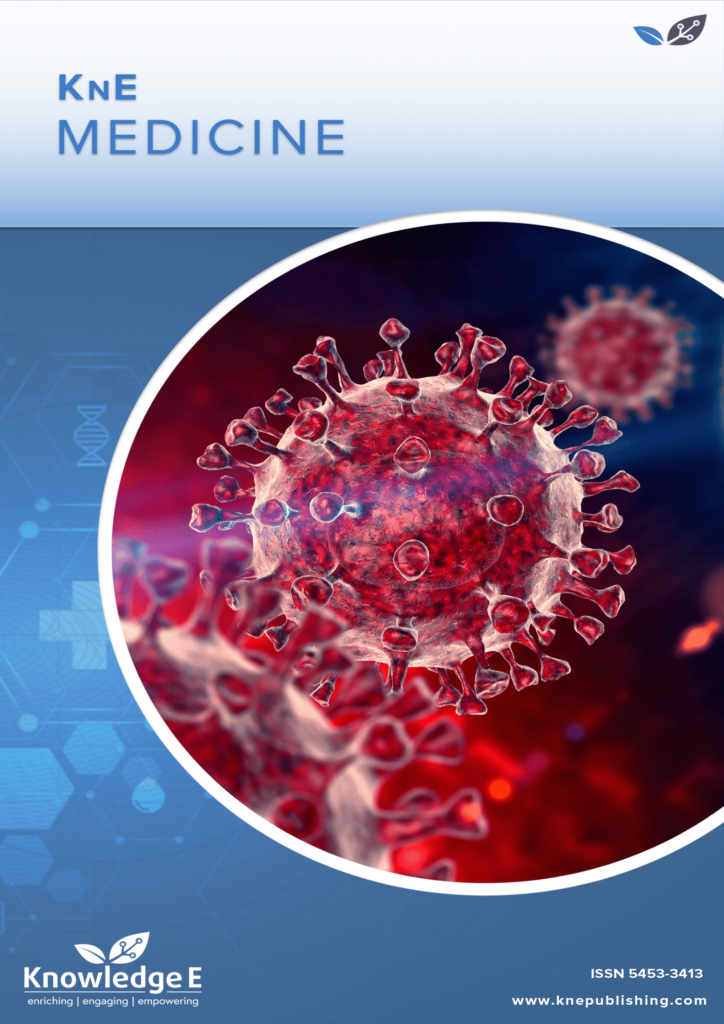
KnE Medicine
ISSN: 2519-125X
The latest conference proceedings on all fields of medicine.
The Relationship Between Sociodemographic Factors and Self Management in Stroke Patients
Published date:Sep 15 2022
Journal Title: KnE Medicine
Issue title: The International Conference of Medicine and Health (ICMEDH)
Pages:774–781
Authors:
Abstract:
Stroke is very common in society and can cause physical disability and even death. Stroke can be affected by poor self-management. Sociodemographic factors can influence self-management. The purpose of this study was to determine the relationship between sociodemographic factors and self-management in stroke patients. This study used an observational approach with a cross-sectional design. 64 people were recruited using purposive sampling. The inclusion criteria included patients with a stroke diagnosis, who were conscious and able to communicate both verbally and in writing. Data collection was through the SSMQ questionnaire and data analysis involved the Chi-square test. The results indicated that most of the respondents had good self-management (64.1%). There was no significant influence of age (p = 0.111), gender (p = 0.885), occupation (p = 0.596), stroke duration (p = 0.182) or education (p = 0.588) on self-management. Income had a significant relationship with self-management of (p = 0.044).
Keywords: sociodemography, self management, stroke
References:
[1] Ginting, Tugas Perawat Dalam Menerapkan Keselamatan Pasien Stroke Dirumah Sakit., 2019.
[2] N. Permatasari, “Perbandingan Stroke Non Hemoragik dengan Gangguan Motorik Pasien Memiliki Faktor Resiko Diabetes Melitus dan Hipertensi.,” Jurnal Ilmiah Kesehatan Sandi Husada. vol. 11, no. 1, pp. 298–304, 2020.
[3] D. Mutiarasari, “Ischemic Stroke: Symptoms, Risk Factors, and Prevention.,” Medika Tadulako, Jurnal Ilmiah Kedokteran. vol. 1, no. 2, pp. 36–44, 2019.
[4] K. Sudiantara, i K. Gama, and I.A.M. Swandewi, “Sosiodemografi Dengan Perilaku Pencegahan Stroke.,” p. 2017.
[5] W. Lead and T. Author, “D2.1. Self-management in Stroke.,” no. 689947, p. 2017.
[6] M.L. Ramdani, “Karakteristik dan Periode Kekambuhan Stroke pada Pasien dengan Stroke Berulang di Rumah Sakit Margono Soekardjo Purwokerto Kabupaten Banyumas.,” Jurnal Keperawatan Muhammadiyah. vol. 3, no. 1, pp. 1–15, 2018.
[7] E.J. Boger, M. Hankins, S.H. Demain, and S.M. Latter, “Development and psychometric evaluation of a new patient -reported outcome measure for stroke self -management: The Southampton Stroke Self - Management Questionnaire (SSSMQ).,” Health and Quality of Life Outcomes. vol. 13, no. 1, pp. 1–9, 2015.
[8] Hardywinoto Setiabudhi, Panduan gerontologi tinjauan dari berbagai aspek : menjaga keseimbangan kualitas hidup para lanjut usia / Tony., 2009.
[9] D. Rahmawati, T. Kurniawan, and ..., “Gambaran Self-Management Pada Pasien Stroke Yang Menjalani Rawat Jalan.,” Jurnal …. p. 2019.
[10] P.D. Pamungkas, “Pengaruh Program Stroke Self Management Terhadap Kualitas Hidup Pasien Pasca Stroke Di Kota Pontianak.,” Naskah Publikasi. pp. 1–15, 2017.
[11] Y.E.K.A. Cahyani, “Gambaran Self Management Penderita Hipertensi Di Puskesmas Grogol Kabupaten Sukoharjo.,” p. 2019.